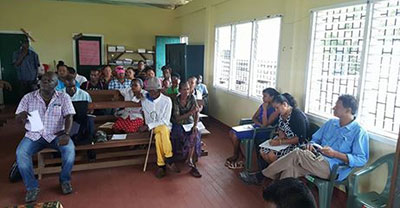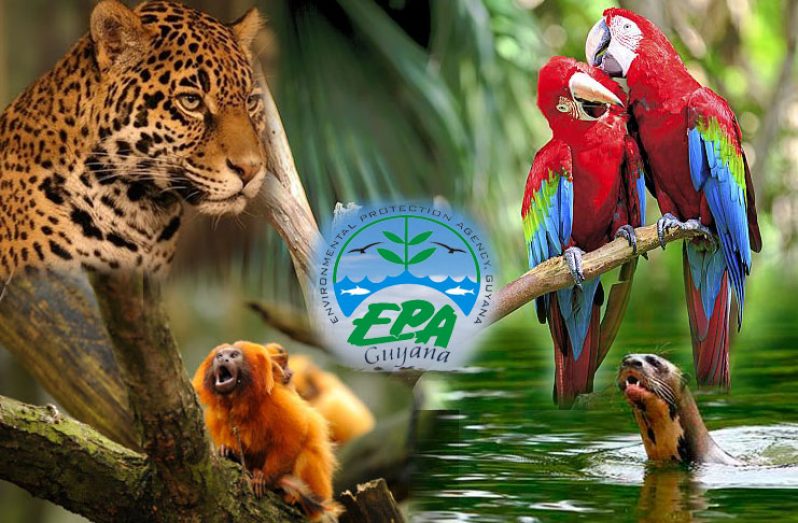PART 2
HELLO readers, last week in our feature, we introduced you to one of the methods utilised by the Environmental Protection Agency (EPA) to foster public participation in the decision-making process for the authorisation of developmental projects – public scoping meetings.
 We highlighted that public scoping meetings are utilised for projects where an Environmental Impact Assessment (EIA) is required because the impacts of the project may be either significant or unknown. This essentially gives the public the opportunity to have their say in the project.
We highlighted that public scoping meetings are utilised for projects where an Environmental Impact Assessment (EIA) is required because the impacts of the project may be either significant or unknown. This essentially gives the public the opportunity to have their say in the project.
This week’s article will further explore the features of these meetings so that you can be fully equipped to participate and make meaningful contributions.
Who organises public scoping meetings and where are they held?
The developer or the project proponent is responsible for organising all logistics for such a meeting. The EPA, however, may assist the developer in organising these meetings. In most instances, public scoping meetings are held in central locations of the communities or regions where the proposed project is expected to have the greatest impact. This is done so that residents of the surrounding communities can attend to learn more about the project and help to identify some of the potential impacts in the preliminary stages of the project.
HOW MANY PUBLIC SCOPING MEETINGS IS THE DEVELOPER EXPECTED TO KEEP?
The number of public scoping meetings vary depending on the scale and nature of the project. However, it is the discretion of the EPA to suggest the number of meetings and possible locations for these meetings based on the project. Remember this process needs your input, hence your participation is necessary.
How will I know of such a meeting?
After it has been decided that a project requires an EIA, a notice is published via the newspapers, inviting comments from the public within 28 days. Scoping meetings are usually held during this period. Notices for these meetings are also advertised in local newspapers, other print and publication media, EPA’s website and social media sites. Notices and flyers are also posted at public offices in your communities to inform you of upcoming meetings.
WHY SHOULD I ATTEND SUCH A MEETING AND HOW CAN I CONTRIBUTE?
Besides having an important role to play in the development of your community and country at large, your input is necessary to ensure the project is sustainable. Additionally, you can help identify the potential impacts to your community since you can provide a wealth of traditional knowledge and information, e.g., on historic sites, past and current land use and biodiversity in the area etc. Moreover, your inputs can determine whether or not the project is granted an Environmental Authorisation.
WHAT CAN I EXPECT FROM THESE MEETINGS?
From this kind of meeting you can expect the developer to provide and present important information on:
– a description of the proposed project inclusive of site, design and size;
– possible effects on the environment;
– the duration of the project;
– a non-technical explanation of the project; and
– any other information the EPA deems relevant.
WILL MY CONTRIBUTION BE TAKEN INTO CONSIDERATION?
Most definitely! All comments/ concerns/suggestions/recommendation and questions raised at these meetings will be used to guide both the EPA and the developer to develop ‘Terms of Reference’ (ToR). The ToR will guide the Environmental Impact Assessment (EIA). The goal of the EIA is to protect and enhance the quality of human life as well as protect the environment, all to ensure development is conducted in a sustainable manner and in keeping with Guyana’s green developmental path. It is important to note that even if you don’t attend these meetings, you can still send written submissions to the Agency.
UPCOMING PUBLIC SCOPING MEETINGS
Esso Exploration and Production Guyana Ltd. EEPGL, Phase Two Development
Cotton Field Secondary School, Anna Regina, Essequibo Coast – 16:00 hrs
January 24, 2018
Esso Exploration and Production Guyana Ltd. EEPGL, Phase 2 Development
DN&R Enterprise, Charity, Essequibo Coast – 09:30 hrs
January 25, 2018
Esso Exploration and Production Guyana Ltd. EEPGL, Phase 2 Development
Leonora Technical Institute, West Coast Demerara -15:00 hrs
January 26, 2018
You can share your ideas and questions by sending letters to: “Our Earth, Our Environment”, C/O ECEA Programme, Environmental Protection Agency, Ganges Street, Sophia, Georgetown, or email us at eit.epaguyana@gmail.com or follow us on Facebook and Instagram.



.jpg)








